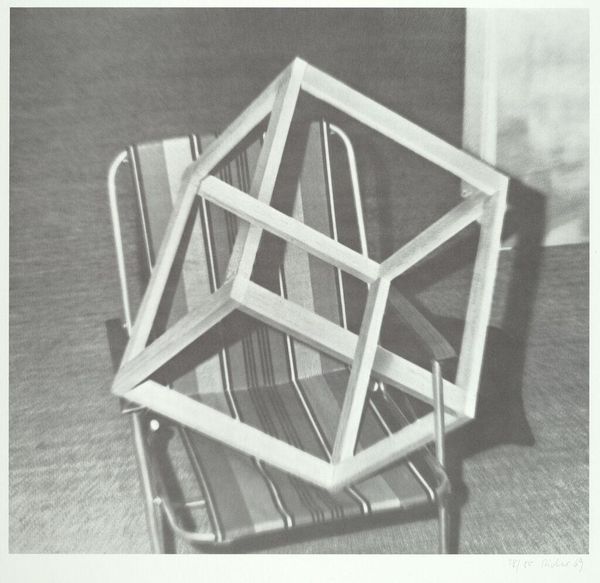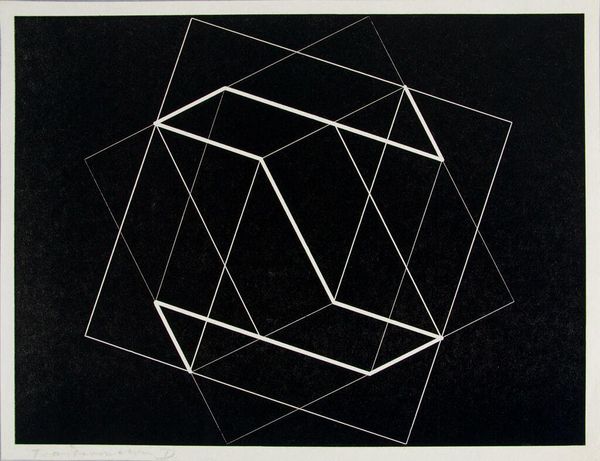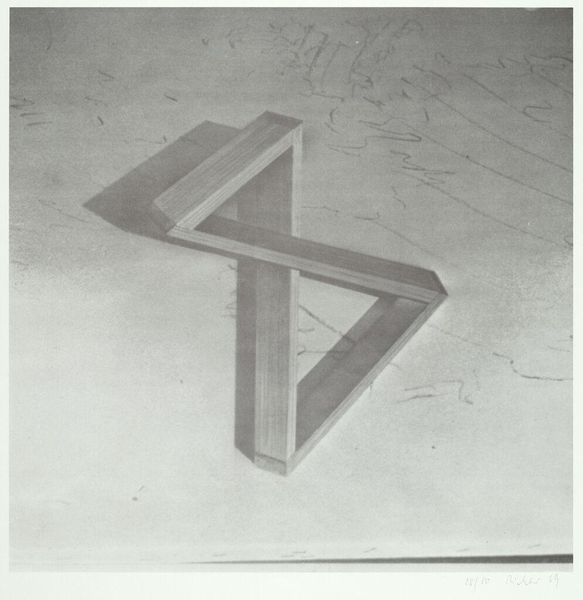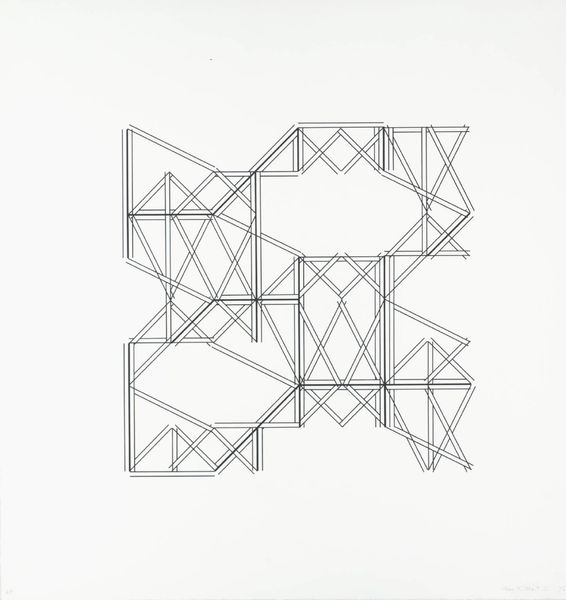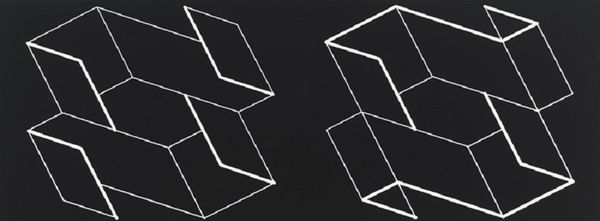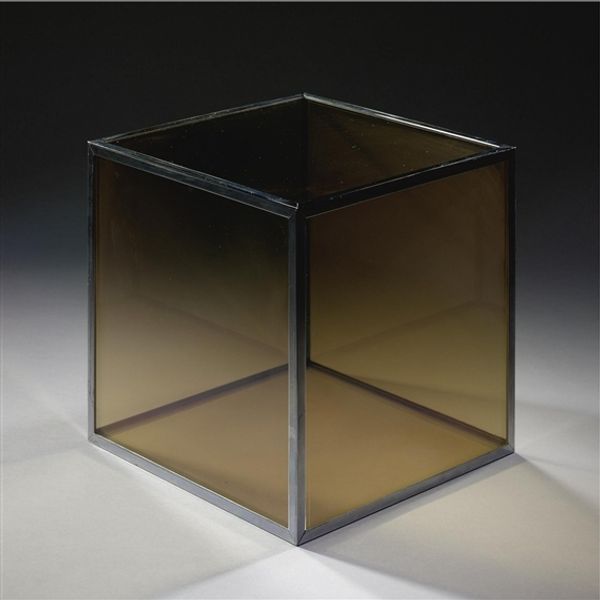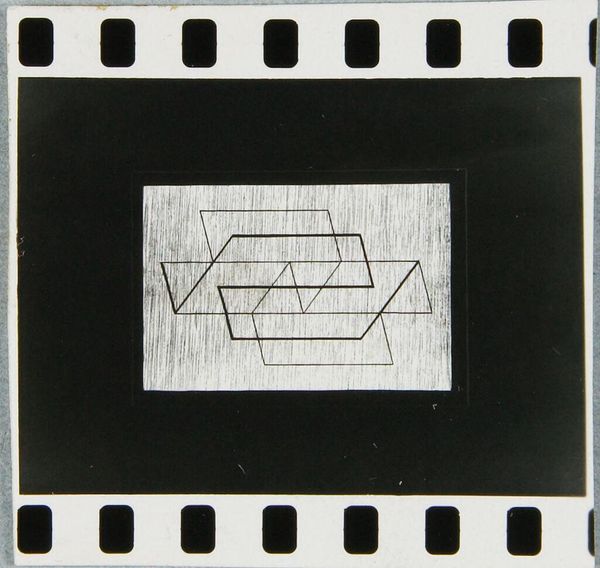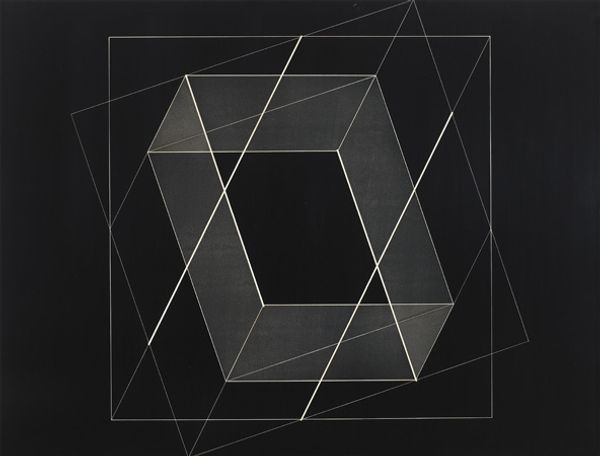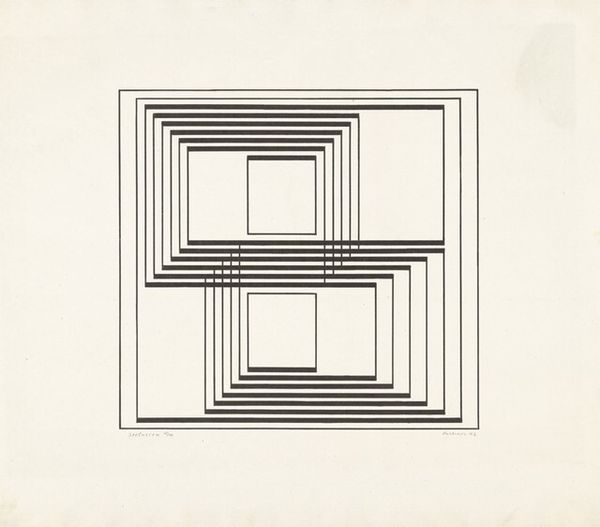
photography
#
still-life-photography
#
conceptual-art
#
tonal
#
photography
#
geometric
#
capitalist-realism
#
abstraction
#
pop-art
#
line
#
modernism
Copyright: 2019 Gerhard Richter - All Rights Reserved
Curator: Here we have Gerhard Richter’s "Cube on Lawnchair," a photograph taken in 1969. It’s such an unassuming scene, a striped lawn chair with what appears to be a bare wooden cube perched on top, rendered in black and white. What's your immediate reaction? Editor: Utterly mundane, but with this gnawing tension. The blurring around the edges almost suggests something not entirely stable. That cube, stark and geometric, feels strangely displaced and temporary. Curator: Richter really challenges our perception of reality, doesn’t he? On the surface, it’s simply documenting an object. But through the lens of photography, and in placing this geometric abstraction on such a domestic item, the piece transforms. To me, the blurring adds a softness that contradicts the cube’s hard edges. Editor: It's almost as if the photo’s asking, what *is* the material reality of leisure in late capitalism? I can't help thinking about who made the chair, who constructed the cube – and the inherent labor behind those everyday objects and experiences of downtime. Was this chair mass-produced in a factory? Did Richter make the cube himself, or outsource it? Curator: That reading makes sense. It also adds this quiet melancholy to it; you think about all of the stories hidden inside it. It asks us to pause on a moment and contemplate, and feel what comes up. Perhaps sadness about something ordinary and easy being fleeting and impossible to hold. Editor: Right, that's very apt. Consider the social context of West Germany in 1969. This photograph emerges within larger conversations questioning consumption and the social fabric during post-war recovery and late capitalism. It makes a point about how geometric abstraction became intertwined in mundane existence. Curator: I completely agree. It almost feels prescient. These clean lines and manufactured goods start to be read as somewhat toxic, because that way of life wasn't designed for sustainability or equality. What's striking, in both his paintings and photographs, is his insistence on presenting an ‘idea’ of the thing and not the thing itself, blurring it, layering it...almost sabotaging any definitive view of something so simple. Editor: Precisely! And by placing these industrially produced objects into an artistic composition, Richter exposes art-making as work and consumption that relies on its own chain of production. The labor is camouflaged, like a product placement shot in everyday life. Curator: I love that. After diving in, that 'mundane' first impression reveals how even in quiet simplicity, so many conversations can unfold. Editor: Yes, and it all boils down to making us reflect on the everyday stuff that quietly constructs our worlds.
Comments
No comments
Be the first to comment and join the conversation on the ultimate creative platform.
